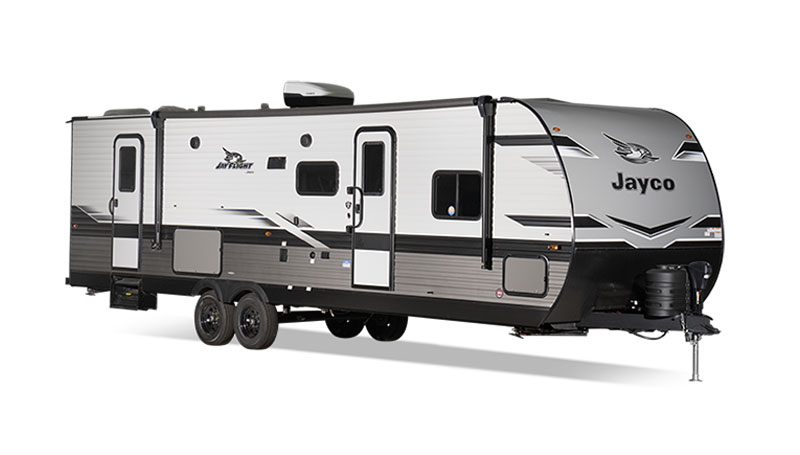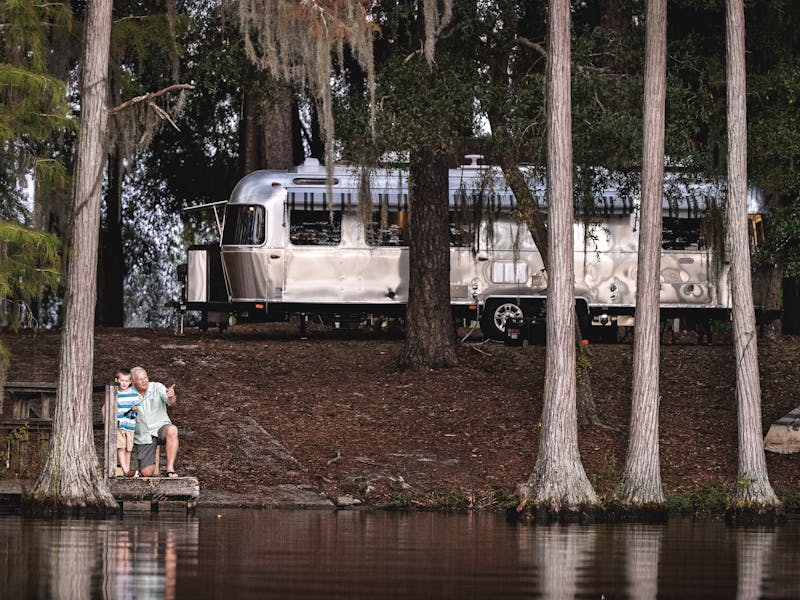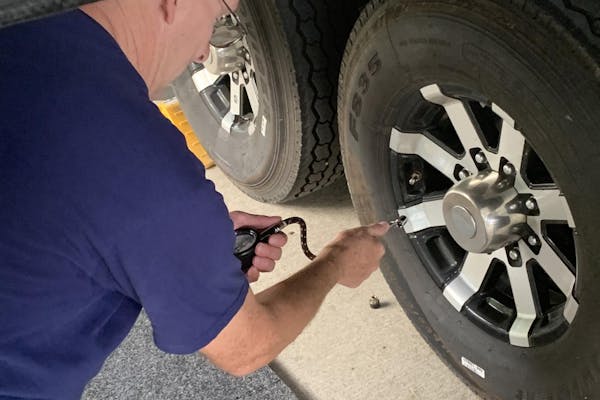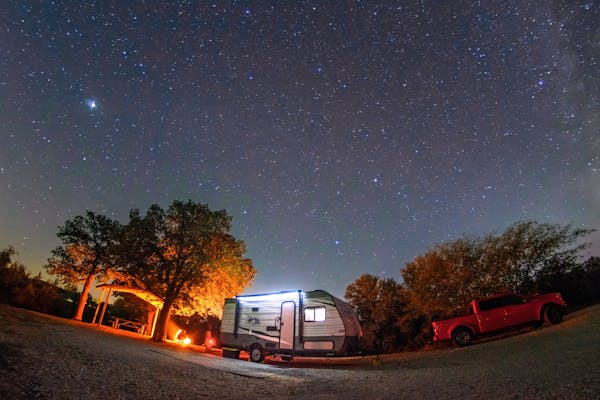Drive Smart
Whenever possible, try to choose routes that avoid steep inclines and rough terrain. We know it's not possible to go through mountainous areas like much of central Colorado, but if you can, this will reduce the strain on your engine and transmission. As our truck has gotten older, we've kept an eye on its gauges even more going over mountain passes. Sometimes you simply have to pull over and let your tow vehicle take a break when you notice any signs of strain.
Use Tow Mode
Check to see if your tow vehicle comes with a tow mode. Our Ford comes with a small button on the gear shifter that allows for a tow mode and a sport mode. The tow setting adjusts the transmission shift patterns to reduce wear and tear while towing, so make sure to use it.

Take Care of Your Brakes
Apply brakes smoothly and gradually to avoid overheating them, especially on long descents. You can burn through brakes quickly by not using the correct gear on declines. Engine braking can also help. Along the same lines, we highly recommend you get a trailer brake controller that can synchronize the trailer brakes with your tow vehicle's brakes. It provides safer stopping power.
Sway and Weight Distribution
Not everyone believes in using these two items on their lightweight travel trailers, but we feel they can help ease the burden on your tow vehicle over the long run. They are a weight distribution hitch and sway control.
A weight distribution hitch is designed to distribute the weight more evenly across the axles of your tow vehicle and the trailer. This enhances stability and control. While sway control can help prevent the trailer from swaying side-by-side, which can be caused by wind, passing vehicles, or improper weight distribution. Both can add extra safety and life to your tow vehicle.
Use these tips so your tow vehicle will stay in good shape for a longer time.
Maintain Your Tires
We feel it is essential you regularly check your tires before, during, and after your road trips. Ensure they are properly inflated to the currency towing capacity, especially on your longer road trips. We like to do a quick walk around and quickly inspect the two RV tires whenever we pull over at a gas station.
It takes less than a minute to spot any nails you could have run over, irregular tread wear, or odd bulging. We've had to handle three RV tire changes on our trips because of Alison's sharp eyes spotting issues. So do this every trip, and you'll protect your lightweight travel trailer from the damage of a blowout.

















